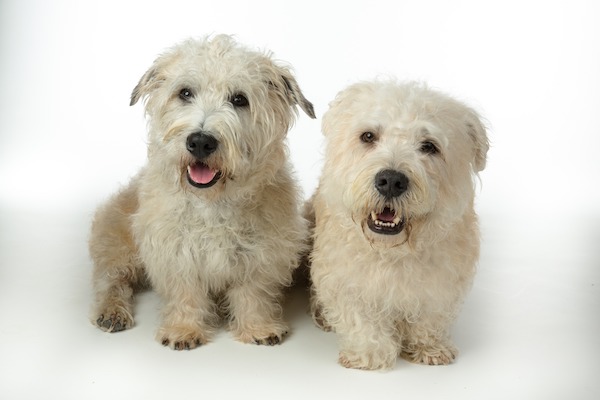
Imagine for a moment that you are asked to get on your hands and knees on a mound of dirt and move the soil out of your way to get to a buried treasure. The treasure will make you rich for the rest of your life, so you’re pretty motivated.
As you envision yourself scooping the dirt out of your way, focus on your wrists. Unless they’ve been put on the wrong arms, your wrists are tilting your hands inwards so that the dirt you’re scooping away flies off to the sides and not between your legs. After all, what would be the point of shoveling dirt to a spot you’ll only have to climb over? It would be inefficient, and frankly, dumb.
The Irish farmers who relied on dogs to control vermin understood this, and for centuries, they bred a dog built for the job. Mind you, bowed legs aren’t desirable in most breeds, and in fact, it’s a structural fault in many of them. There is one breed among them, however, in which “crooked” legs helped the dog do its job, and it’s so important that “short, bowed and well boned” forelegs is written in the standard. That breed is the Glen of Imaal Terrier.
The Glen’s whole appearance is determined by its primary function to control vermin (form following function). Its distinctive front legs should be bowed and turned out to function as your wrists did as you were digging for your treasure: To throw the dirt out to the sides when going to ground after vermin. Those legs, however, weren’t enough to do the whole job.
Native European species of badgers, one of the Glen’s quarry, can be beefy and muscular, and weigh as much as the dog. The Glen’s short-legged wrap front connects to an extremely powerful hindquarters which acts like a strong leverage when pulling such a critter out of its den. Its disproportionately short legs belie the fact that a Glen often weighs more than one would expect: According to the standard, a Glen of Imaal Terrier can grow to only fourteen inches high at the shoulder, but he should weigh approximately thirty-five pounds! Their bone structure is one of the heaviest among dogs of this height. Remember now, the Glen’s job was quite literally not for a light-weight. Regardless of how motivated the dog was, if it wasn’t built right, it couldn’t do its job efficiently, and certainly not without suffering damage to itself.
At one time, tests of gameness called Teastas Mor were held in Ireland, and no terrier could become a champion without a Teastas Mor certificate. During such a trial, a terrier was set loose into a winding tunnel into which a badger had been released earlier. The dog had to find the badger within one minute, and then he had six minutes to pull the now thoroughly irritated animal from the hole with the badger frantically holding its ground. The dog that held the badger and worked it for six minutes without a sound was awarded a certificate of Teastas Misneac. Both the Teastas Beag (conducted above ground) and the Teastas Misneach (below ground) have long been outlawed, and the test hasn’t been required to make up a champion in over 50 years, but before then, the gameness of a Glen was determined in the trenches, and those are the dogs that were bred.
Image: Glen of Imaal Terriers by Mark Brown shared with kind consent of Kelli Whitfield and Mark Brown

People are always shocked when they meet and put hands on Glens IRL as in photos their size doesn’t convey. Glens have massive amounts of bone and well muscled hind quarters, just on short legs! My favorite quote from the breed standard: “ Longer than tall and sporting a double coat of medium length, the Glen possesses great strength and should always convey the impression of maximum substance for size of dog. ” Tough terriers for sure so don’t let the short legs and fluffy faces fool you! 😁